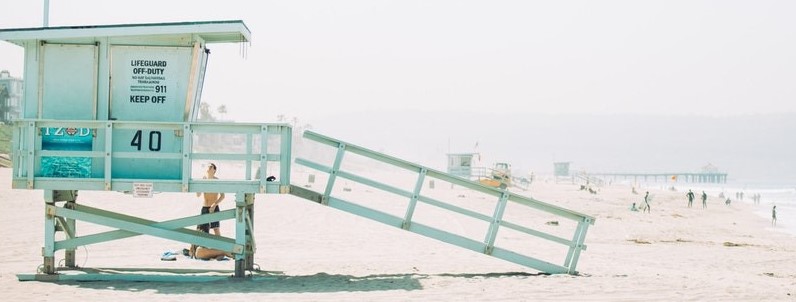I believe communicating science with a broad and diverse audience is our responsibility as researchers. One of my most important audiences has always been my friends and family, many of whom didn’t do or don’t remember a single high school biology lesson. Needless to say, they’ve been a great testing ground for honing my elevator pitch – and I’ve discovered a neat metaphor makes it so much easier to describe complex scientific concepts without the dumbfounded look that normally accompanies any mention of protein homeostasis at family BBQ’s. Thankfully, our beach side home of Wollongong provides plenty of inspiration!
My scientific passion is understanding how each cell in our body achieves the world’s greatest balancing act – keeping all of its basic building blocks, proteins, in their correct three-dimensional conformation and therefore a functional state. Cells have an intricate network of ‘lifeguards’, the proteostasis network, who monitor the proteins (or swimmers), keeping them folded and active or sending them to be degraded when they are no longer functional or needed. When there are disruptions to these lifeguards, the swimmers begin to drown (misfold) and can take others down with them (non-functional proteins accumulate) – at which point our cells begin to die. In the case of neurons, this cell death manifests as diseases like Alzheimer’s, ALS and Parkinson’s disease. It is therefore immensely important for us to understand why proteins begin to drown, how the lifeguards work and what contributes to their failure.
Much of my PhD work centered on one type of lifeguard – the small heat shock molecular chaperones. These lifeguards essentially patrol the beach, watching the swimmers, and spring into action when they detect a swimmer in trouble (a misfolded protein). Unfortunately they don’t have the ability to completely rescue a drowning swimmer (refold the protein), but they are quite good at bringing them back to the clubhouse and keeping them safe until help arrives (holding the protein in a folding-competent state). I focused my research on understanding how the small heat shock proteins help the swimmers (do they give them a life-ring? a pair of floaties? when do they hand them over to the experts?), and whether there was anything they could do once the drowning swimmers started to accumulate.
As a result of my PhD research, we now know that there are many ways the small heat shock proteins can interact with a particular type of swimmer (a-synuclein, whose misfolding and accumulation leads to Parkinson’s disease). Understanding these fundamental mechanisms is a crucial step in developing therapeutics to target the cellular lifeguards, to help treat or cure the diseases that result from their failure.

